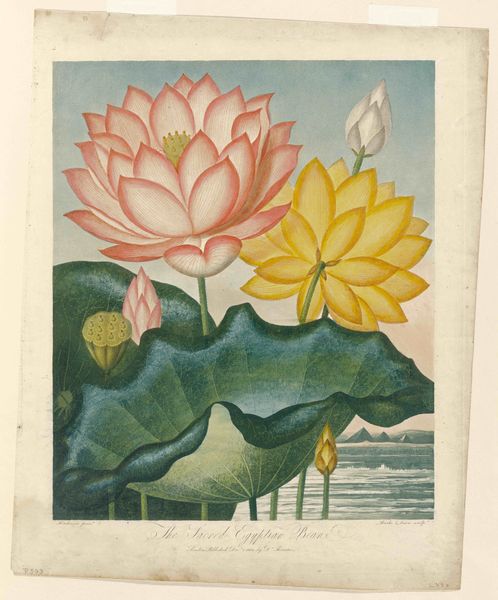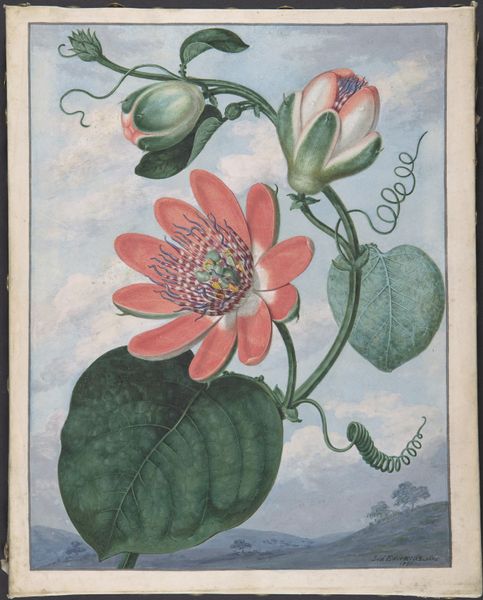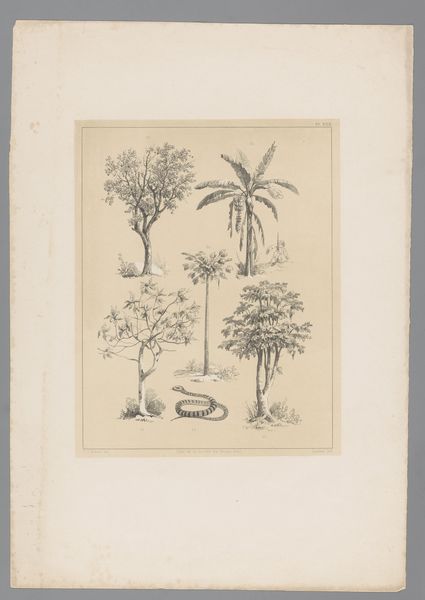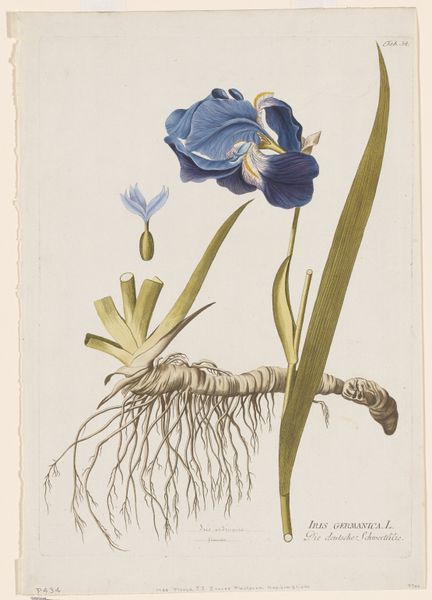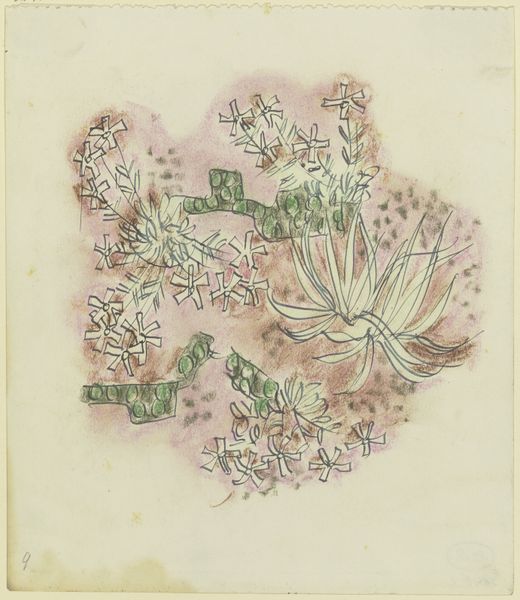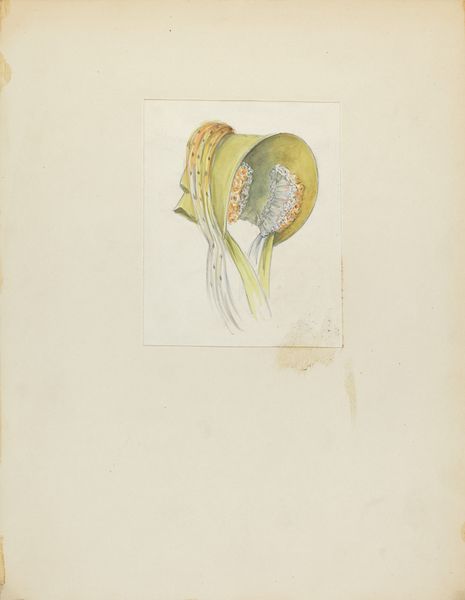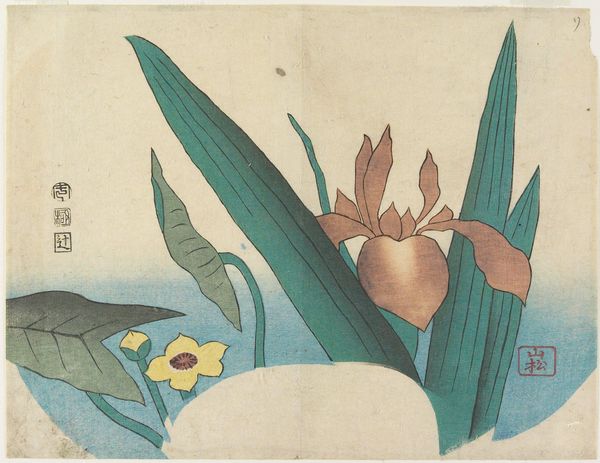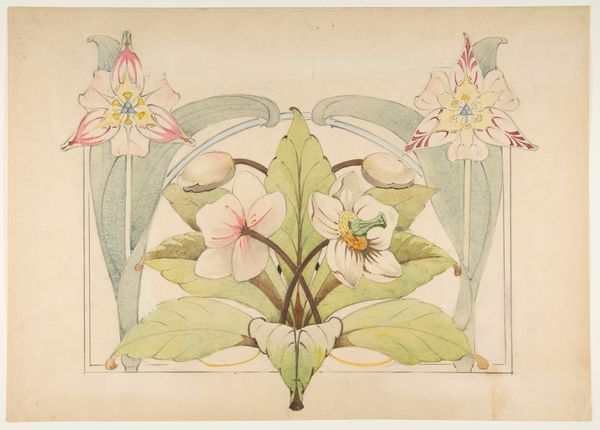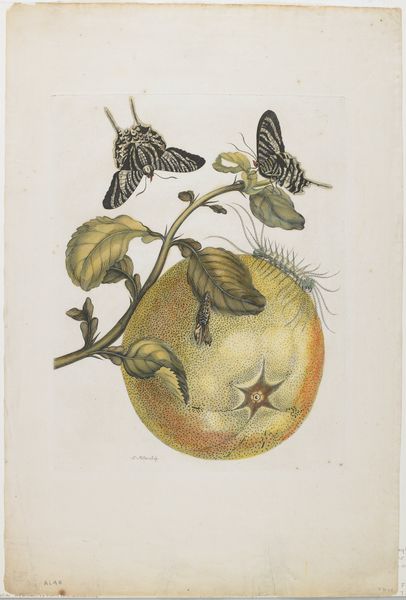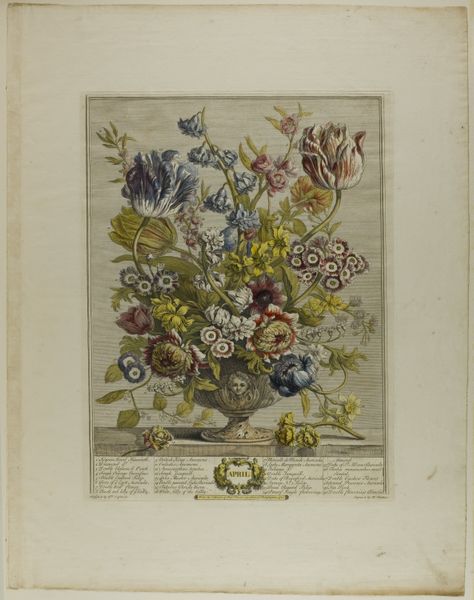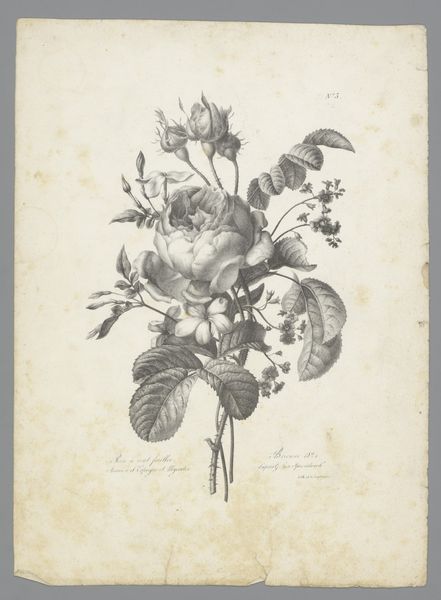
The Blue Egyptian Water Lily, from "The Temple of Flora, or Garden of Nature" 1804
0:00
0:00
drawing, print, paper, watercolor
#
drawing
# print
#
landscape
#
paper
#
watercolor
#
coloured pencil
#
orientalism
#
water
Dimensions: Image: 17 1/8 x 14 in. (43.5 x 35.6 cm) Plate: 20 1/2 × 19 5/8 in. (52 × 49.8 cm) Sheet: 22 7/16 × 17 13/16 in. (57 × 45.2 cm)
Copyright: Public Domain
Curator: Oh, my goodness, it's just bursting with a sort of gentle hope, isn't it? Like waking up after a long dream, maybe a bit melancholy, but definitely serene. Editor: This beautiful image is entitled "The Blue Egyptian Water Lily," taken from "The Temple of Flora, or Garden of Nature," crafted back in 1804. Joseph Constantine Stadler employed watercolor and printmaking techniques on paper to render this stunning scene, now residing at the Metropolitan Museum of Art. The whole visual concept seems like an early form of landscape art mixed with exotic floral representation. Curator: "Exotic" hits the mark! The lily itself, this vibrant blue, contrasts so well with the gentle hues behind it. It's like Stadler is trying to pull in two worlds, domestic familiarity against a distant land...sort of yearning for elsewhere, I feel it. And what do the lily and the setting speak to for you? Editor: Well, water lilies, in many cultures, symbolize purity, rebirth, even enlightenment. But this blue variant...it's rarer, almost mystical. The Egyptian setting heightens this, layering in echoes of ancient spirituality. Temples nestled behind palm trees: Stadler pulls in themes of serenity and divine reflection. Curator: Ah, the symbols of the old, juxtaposed so boldly with a touch of that "scientific" curiosity of the time... it must have just captured the minds of audiences. Makes you wonder about who would have owned a print like this. The artist seems to see a kind of peace between seeking knowledge and finding faith. Editor: Indeed. And notice how the cool blue and greens dominate, offering a sense of calm observation? However, in historical context, it also reveals a specific cultural lens through which Egypt was viewed – tinged with orientalism, no escaping that era’s viewpoint. Curator: Which could explain why it calls me a little more than some depictions. Almost has an other-worldly detachment in presentation. Like a stage scene! Is the blue a key to unravel something more personal and the real is it, or has it simply drifted into my subconscious on an unusually sunny day? Editor: That personal connection is part of the art’s power. And that’s the lingering resonance, the questions it stirs. Stadler has gifted us more than just a pretty picture—he’s sparked something of an ancient mirror reflecting an inner place, maybe a shared journey with ancient seekers... Curator: Absolutely, in a dance that moves between exotic fascination, botanical study, and the longing to capture something deeper...maybe like us searching meaning in it all now, hm?
Comments
No comments
Be the first to comment and join the conversation on the ultimate creative platform.
